Sony Group PCG11311L Notebook Device User Manual Proteus Safety Paper rev2
Sony Corporation Notebook Device Proteus Safety Paper rev2
Contents
Proteus_Safety(Paper)rev2
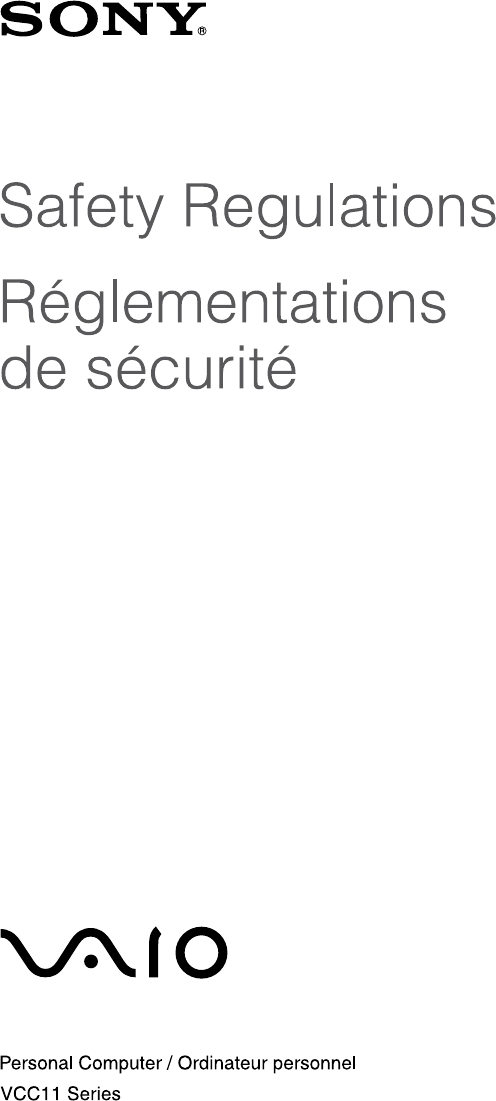
4-287-015-11(1)

3
For customers in USA and Canada
Pour les utilisateurs aux Etats-Unis et au
Canada
Owner’s Record
The model number and serial number are located on the bottom, the back panel, or inside the battery
compartment of your VAIO® computer. Record the model and serial numbers in the space provided here, and keep
in a secure location. Refer to the model and serial numbers when you call your Sony Service Center.
Model Number:
Serial Number:
Notice
© 2011 Sony Electronics Inc. Reproduction in whole or in part without written permission is prohibited. All rights
reserved. This manual and the software described herein, in whole or in part, may not be reproduced, translated,
or reduced to any machine-readable form without prior written approval.
SONY ELECTRONICS INC. PROVIDES NO WARRANTY WITH REGARD TO THIS MANUAL, THE
SOFTWARE, OR OTHER INFORMATION CONTAINED HEREIN AND HEREBY EXPRESSLY DISCLAIMS
ANY IMPLIED WARRANTIES OF MERCHANTABILITY OR FITNESS FOR ANY PARTICULAR PURPOSE
WITH REGARD TO THIS MANUAL, THE SOFTWARE, OR SUCH OTHER INFORMATION. IN NO EVENT
SHALL SONY ELECTRONICS INC. BE LIABLE FOR ANY INCIDENTAL, CONSEQUENTIAL, OR SPECIAL
DAMAGES, WHETHER BASED ON TORT, CONTRACT, OR OTHERWISE, ARISING OUT OF OR IN
CONNECTION WITH THIS MANUAL, THE SOFTWARE, OR OTHER INFORMATION CONTAINED
HEREIN OR THE USE THEREOF.
SONY CANNOT WARRANT THAT THE FUNCTIONS DESCRIBED IN THIS GUIDE WILL BE
UNINTERRUPTED OR ERROR-FREE. SONY ALSO ASSUMES NO RESPONSIBILITY, AND SHALL NOT BE
LIABLE FOR ANY DAMAGES TO, OR VIRUSES THAT MAY INFECT, YOUR COMPUTER EQUIPMENT, OR
OTHER PROPERTY ON ACCOUNT OF YOUR ACCESS TO, USE OF, OR BROWSING IN ANY DESCRIBED
WEB SITE, OR YOUR DOWNLOADING OF ANY MATERIALS, DATA, TEXT, IMAGES, VIDEO, OR AUDIO
FROM ANY DESCRIBED WEB SITE. WEB SITE INFORMATION IS OBTAINED FROM VARIOUS SOURCES
AND MAY BE INACCURATE. COPIES OF COPYRIGHTED INFORMATION MAY ONLY BE MADE FOR
LEGALLY PERMISSIBLE PURPOSES.
Sony Electronics Inc. reserves the right to make any modification to this manual or the information contained
herein at any time without notice. The software described herein is governed by the terms of a separate user license
agreement.
This product contains software owned by Sony and licensed by third parties. Use of such software is subject to the
terms and conditions of license agreements enclosed with this product. Some of the software may not be
transported or used outside the United States. Software specifications are subject to change without notice and
may not necessarily be identical to current retail versions.
Certain product(s) included with this computer may include features such as copy protection and content
management technology. USE OF THE SOFTWARE PRODUCT(S) REQUIRES AGREEMENT TO APPLICABLE
END USER AGREEMENTS AND FULL COMPLIANCE WITH APPLICABLE PRODUCT ACTIVATION
PROCEDURES. Product activation procedures and privacy policies will be detailed during initial launch of the
software product(s), or upon certain reinstallations of the software product(s), or reconfigurations of the
computer, and may be completed by Internet or telephone (toll charges may apply).
Updates and additions to software may require an additional charge. Subscriptions to online service providers may
require a fee and credit card information. Financial services may require prior arrangements with participating
financial institutions.

4
Important information for Canadian customers: Your new VAIO® computer includes certain software versions
or upgrades, and Internet services or offers that are available to U.S. customers only.
Sony, VAIO, and the VAIO logo are trademarks or registered trademarks of Sony Corporation.
All other trademarks are trademarks or registered trademarks of their respective owners.
The Wireless LAN functionality, which is incorporated into selected models only, has
passed Wi-Fi certification and complies with the interoperability specifications
established by WFA (Wi-Fi Alliance).
Reverse engineering or disassembly is prohibited.
End User / Product Activation Requirements
Certain software product(s) included with this computer may include features such as copy protection and content
management technology. Use of the software product(s) requires agreement to applicable end user agreements and
full compliance with applicable product activation procedures. Product activation procedures and privacy policies
will be detailed during initial launch of the software product(s), or upon certain reinstallations of the software
product(s) or reconfiguration of the computer, and may be completed by Internet or telephone (toll charges may
apply).
5
Safety Information and Caution
For questions regarding your product or for the Sony Service Center nearest you, visit the Sony online support
Web site at http://esupport.sony.com/EN/VAIO/ for customers in USA or at http://www.sony.ca/support/ for
customers in Canada.
To prevent fire or shock hazard, do not expose your computer to rain or moisture.
To avoid electrical shock, do not open the cabinet. Refer servicing to qualified personnel only.
Turning off your computer with the power button or the power switch does not disconnect the computer
completely from mains voltage. To disconnect it completely, unplug the AC adapter or the power cable from
mains. The socket-outlet shall be installed near the equipment and shall be easily accessible.
Do not use your computer directly on your lap. The temperature of the base of the unit will rise during
normal operation and over time could result in discomfort or burns.
Do not place the AC adapter in contact with your skin. Remove the AC adapter away from your body if it
becomes warm and causes discomfort.
Do not block the air exhaust or intake vents while the computer is in operation.
Blocking the air vents leads to restriction on air circulation, which can cause internal overheating, resulting
in deformation of the computer, a malfunction, or a fire hazard.
Observe the following precautions to provide adequate air circulation and to ensure normal reliable
operation:
Do not use the computer on any cloth-covered surfaces such as rugs, cushion or blankets, near
draperies, or on dusty surfaces that may block its air vents. Always use the computer on flat surfaces.
Do not use the computer and/or the AC adapter while covered or wrapped in cloth. Ensure the AC
adapter operates in a clear environment.
Turn off the computer and make sure the power indicator light is unlit before putting the computer
into a bag or a carrying case.
When holding the computer, be sure to wait until it cools down. The surface around the air exhaust vent
may be extremely hot.
To prevent possible damage and risk of ignition to your computer during transportation, first attach any
supplied connector covers and slot protectors in their appropriate locations, and secure the battery pack in
the battery compartment.
Do not use or store your computer in a location subject to heat sources, such as radiators or air ducts; direct
sunlight; excessive dust; moisture or rain; mechanical vibration or shock; strong magnets or speakers that
are not magnetically shielded; excessively high and low temperatures; and high humidity.
For information on how to replace the battery pack, refer to the Quick Start Guide that came with your
computer.
Do not charge the battery pack in any way other than as described in the user guide or as designated by
Sony in writing.
For your safety, Sony recommends using the genuine Sony battery pack and AC adapter that are provided
with this product. If either of these items needs to be replaced during the life of the product, be sure to use a
compatible genuine Sony battery pack or AC adapter. Information about compatible models can be found at
http://www.sony.net/.
Sony disclaims and shall assume no responsibility in case of any losses and damages arising from:
the use of non-genuine Sony battery packs or AC adapters with your VAIO® computer.
the disassembly, alteration of, or tampering with any Sony battery pack.
Do not use wireless functionality on hospital premises. Doing so may cause medical devices to malfunction.
Check for and respect airline restrictions on use of wireless capabilities. If use of the wireless function is
prohibited on the airline, click the network icon in the upper right corner of the screen and select the option
to disable the wireless connection before boarding. If you urgently need to disable the wireless function,
turn off the computer.
6
If using wireless functionality near a pacemaker, make sure it is at least 8 inches / 20 cm away from the
pacemaker.
Sony is not responsible for any interference that you may experience or that may be caused when operating
this device.
7
Avertissement
Pour toute question concernant ce produit, veuillez ècrire à Sony Customer Information Service Center au
12451 Gateway Blvd., Fort Myers, FL 33913, USA ou se trouve le Sony Customer Service (service consommateur
de Sony) sur Internet à : http://fr.sony.ca/support.
Pour prévenir tout risque d’incendie ou d’électrocution, garder cet appareil à l’abri de la pluie et de
l’humidité.
Pour prévenir tout risque d’électrocution, ne pas ouvrir le châssis de cet appareil et ne confier son entretien
qu’à une personne qualifiée.
Si vous éteignez votre ordinateur à l’aide du bouton d’alimentation, vous ne le débranchez pas complètement
de la tension de secteur. Pour le débrancher entièrement, déconnectez l’adaptateur c.a. ou le câble
d’alimentation de la prise. L’appareil doit être le plus près possible d’une prise murale pour en faciliter l’accès.
Ne posez pas l’ordinateur directement sur vos genoux. Durant le fonctionnement normal, la température
augmente et cela pourrait créer un inconfort ou des brûlures.
Ne mettez pas l’adaptateur c.a. en contact avec votre peau. Éloignez l’adaptateur c.a. de votre corps s’il
devient chaud et qu’il cause un inconfort.
Lorsque l’ordinateur fonctionne, ne bloquez pas la sortie d’air ou des évents d’aération.
Si vous bloquez les évents d’aération, cela pourrait restreindre la circulation d’air et causer une surchauffe
interne pouvant entraîner une déformation de l’ordinateur, une défaillance ou un risque d’incendie.
Afin d’assurer une circulation d’air normale et un fonctionnement fiable standard, suivez les précautions
suivantes :
N’utilisez pas l’ordinateur sur une surface couverte de tissu, comme un tapis, un coussin ou une
couverture, près d’une draperie ou d’une surface poussiéreuse susceptible de bloquer les évents
d’aération. Utilisez toujours l’ordinateur sur une surface plate.
N’utilisez pas l’ordinateur et/ou l’adaptateur c.a. lorsqu’il est recouvert d’une toile. Assurez-vous que
l’adaptateur c.a. fonctionne dans un environnement dégagé.
Arrêtez l’ordinateur et assurez-vous que le témoin d’alimentation est éteint avant de le mettre dans un
boîtier de transport.
Lorsque vous tenez l’ordinateur, assurez-vous qu’il est refroidi. Il est possible que la surface autour d’un évent
d’aération soit extrêmement chaude.
Afin de prévenir des indemnités à votre ordinateur pendant le transport, attachez d’abord tous les volets de
connecteurs et protecteurs d’emplacements comme il convient, et insérez la batterie dans le logement de la
batterie.
N’utilisez pas votre ordinateur et ne le rangez pas dans un endroit exposé à des sources de chaleur, comme
des radiateurs ou des conduits d’air ; le rayonnement solaire. Ne l’exposez pas non plus à une quantité
excessive de poussière ; à l’humidité ou la pluie ; à une vibration mécanique ou à un choc ; à des aimants
puissants ou à des haut-parleurs non protégés contre les champs magnétiques ; à des températures
extrêmement basses ou hautes et à une humidité intense.
N’essayez pas de charger le module batterie d’une autre façon que celle décrite dans le Guide de l’utilisateur
ou dans la documentation écrite de Sony.
Pour votre sécurité, Sony recommande d’utiliser uniquement le module batterie et l’adaptateur secteur de
marque Sony fournis avec ce produit. Si l’un de ces éléments devait être remplacé durant le cycle de vie du
produit, veillez à utiliser un module batterie ou un adaptateur secteur compatibles de marque Sony. Des
informations sur les modèles compatibles sont disponibles sur : http://www.sony.net/.
Sony rejette toute responsabilité en cas de perte ou de dommages engendrés par l’utilisation de modules
batterie ou d’adaptateurs secteur de marque autre que Sony avec votre ordinateur VAIO®, ou par le
désassemblage ou l’altération des modules batterie Sony.
Ne pas utiliser la fonctionnalité sans fil dans les hôpitaux car cela risquerait de provoquer le mauvais
fonctionnement des appareils médicaux.
Check for and respect airline restrictions on use of wireless capabilities. If use of the wireless function is
prohibited on the airline, click the network icon in the upper right corner of the screen and select the option
to disable the wireless connection before boarding. If you urgently need to disable the wireless function,
turn off the computer.
8
Si vous utilisez la fonctionnalité sans fil à proximité d’un stimulateur cardiaque, assurez-vous qu’il est au
moins à 8 pouces / 20 cm du stimulateur cardiaque.
Sony n’est pas responsable des interférences que vous risquez de rencontrer ou qui risquent d’être
provoquées lors du fonctionnement de cet appareil.
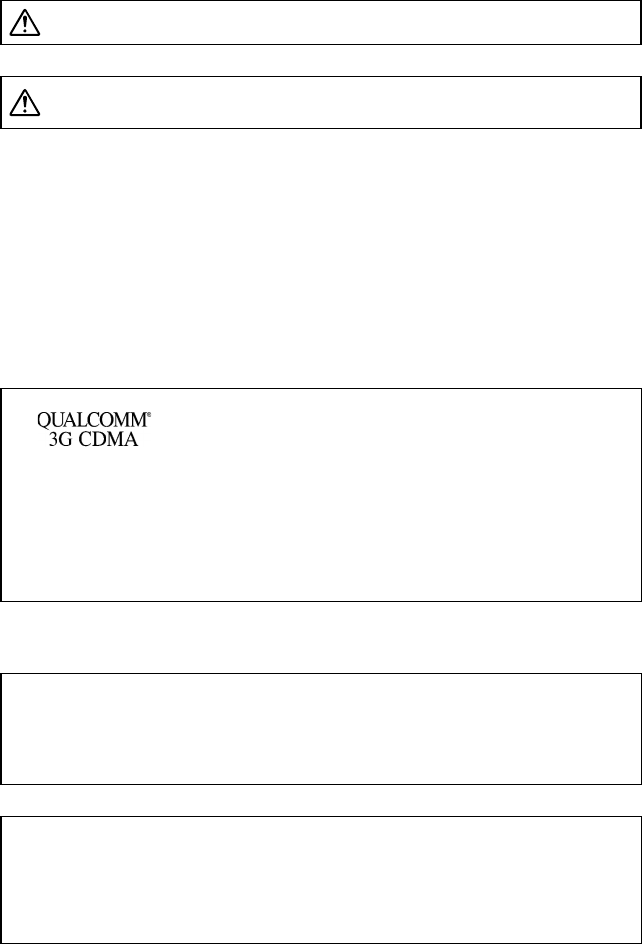
9
To change the backup battery, please contact your nearest Sony Service Center.
Pour changer la pile de rechange, veuillez contacter votre centre de service
Sony le plus près.
Wireless LAN Security
Creating security settings for the Wireless LAN is extremely important. Sony assumes no responsibility for any
security problems that may arise from the use of the Wireless LAN.
Sécurité du réseau local sans fil
La création de paramètres de sécurité pour le réseau local sans fil est extrêmement importante. Sony n’est pas tenu
responsable des problèmes de sécurité susceptibles de se produire lors de l’utilisation du réseau local sans fil.
Licensed by QUALCOMM Incorporated under one or more of the following
Patents:
4,901,307 5,490,165 5,056,109 5,504,773 5,101,501
5,506,865 5,109,390 5,511,073 5,228,054 5,535,239
5,267,261 5,544,196 5,267,262 5,568,483 5,337,338
5,600,754 5,414,796 5,657,420 5,416,797 5,659,569
5,710,784 5,778,338
Only use Wireless LAN indoors when using it with IEEE 802.11a/n (5 GHz).
High power radars are allocated as primary users (meaning they have priority) of 5250-5350 MHz and 5650-
5850 MHz and these radars could cause interference and/or damage to this device.
Utiliser le réseau local sans fil à l’intérieur uniquement lorsqu’il est utilisé avec IEEE 802.11a/n (5 GHz).
Les radars à haute puissance sont alloués en tant qu’usagers principaux (ce qui signifie qu’ils ont la priorité) de
5 250-5 350 MHz et 5 650-5 850 MHz et ces radars pourraient provoquer des interférences ou encore des
dommages à l’appareil.
10
The following FCC statements apply only to the version of this model manufactured for sale in the USA. Other
versions may not comply with FCC technical regulations, and the FCC statements are not applicable in Canada,
including the Province of QUEBEC.
L’avis suivant de la FCC s’applique uniquement à la version de ce modèle fabriqué pour être vendu aux É.-U. Il est
possible que d’autres versions ne soient pas conformes aux règlements techniques de la FCC. Par ailleurs, l’avis de
la FCC ne s’applique pas au Canada, y compris dans la province de QUÉBEC.
FCC Information (USA)
This equipment has been tested and found to comply with the limits for a Class B digital device, pursuant to Part
15 of the FCC Rules. These limits are designed to provide reasonable protection against harmful interference in a
residential installation. This equipment generates, uses, and can radiate radio frequency energy and, if not installed
and used in accordance with the instructions, may cause harmful interference to radio communications. However,
there is no guarantee that interference will not occur in a particular installation. If this equipment does cause
harmful interference to radio or television reception, which can be determined by turning the equipment off and
on, the user is encouraged to try to correct the interference by one or more of the following measures:
Reorient or relocate the receiving antenna.
Increase the separation between the equipment and receiver.
Connect the equipment into an outlet on a circuit different from that to which the receiver is connected.
Consult the dealer or an experienced radio/TV technician for help.
Changes or modifications not expressly approved by the party responsible for compliance could void the user’s
authority to operate the equipment.
NOTE: The manufacturer is not responsible for any radio or TV interference caused by unauthorized
modifications to this equipment. Such modifications could void the user’s authority to operate the equipment.
Only peripherals (computer input/output devices, terminals, printers, etc.) that comply with FCC Class B limits
may be attached to this computer product. Operation with noncompliant peripherals is likely to result in
interference to radio and television reception.
All cables used to connect peripherals must be shielded and grounded. Operation with cables connected to
peripherals that are not shielded and grounded may result in interference to radio and television reception.
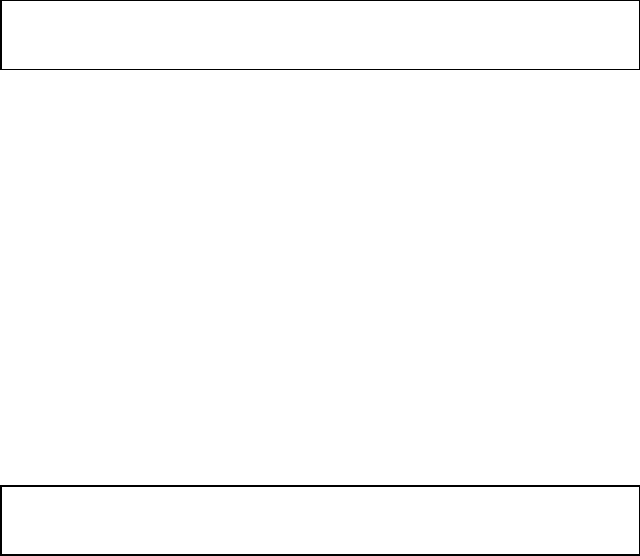
11
FCC/IC Radio Frequency Exposure
The available scientific evidence does not show that any health problems are associated with using low power
wireless devices. There is no proof, however, that these low power wireless devices are absolutely safe. Low power
Wireless devices emit low levels of radio frequency energy (RF) in the microwave range while being used. Whereas
high levels of RF can produce health effects (by heating tissue), exposure to low level RF that does not produce
heating effects causes no known adverse health effects. Many studies of low level RF exposures have not found any
biological effects. Some studies have suggested that some biological effects might occur, but such findings have not
been confirmed by additional research.
The following model (Table 1) has been tested and found to comply with FCC/IC radiation exposure limits set
forth for an uncontrolled environment and meets the FCC radio frequency (RF) Exposure Guidelines in
Supplement C to OET65 and RSS-102 of the IC radio frequency (RF) Exposure rules.
Table 1
Product Name FCC ID IC Number
PCG-11311L
(FCC) Please refer to the SAR test report that was uploaded at FCC website.
(IC) Please refer to the information that consult Safety Code 6, obtainable from Health Canada’s Website.
This device and its antenna(s) must not be co-located or operating with any other antenna or transmitter except
Grant condition. Users are not permitted to modify this transmitter device. Any unauthorized changes made to
this device could void your authority to operate this device.
Exposition aux radiofréquences FCC/IC
Selon les preuves scientifiques disponibles, aucun problème de santé n’est associé à l’utilisation d’appareils sans fil
de faible puissance. Rien ne prouve cependant que ces appareils sont absolument sans danger. Lorsqu’ils sont
utilisés, les appareils sans fil de faible puissance émettent de faibles niveaux d’énergie radiofréquence (RF) dans la
gamme des hyperfréquences. Bien que les niveaux élevés de radiofréquence puissent avoir un effet sur la santé
(réchauffement des tissus), l’exposition à de faibles niveaux n’ayant pas d’effet thermique n’a aucun impact négatif
connu sur la santé. De nombreuses études sur l’exposition aux radiofréquences de faible niveau n’ont révélé aucun
effet biologique. Certaines d’entre elles ont sous-entendu qu’il pourrait y avoir de tels effets, mais leurs résultats
n’ont pas été confirmés par des recherches supplémentaires.
Le modèle suivant (Tableau 1) a été testé et s’est avéré conforme aux limites d’exposition aux rayonnements définies
par la FCC et IC pour l’environnement non contrôlé ; il répond aux règles sur l’exposition aux rayonnements RF
(radiofréquence) figurant dans le Supplément C de la norme OET65 de la FCC et à celles de la norme RSS-102
d’IC.
Tableau 1
Nom du produit ID FCC Numéro IC
PCG-11311L
(FCC) Veuillez vous reporter au rapport de test SAR téléchargé sur le site Web FCC.
(IC) Veuillez vous reporter aux informations relatives au code de sécurité 6 que vous pouvez obtenir sur le site
Web de Santé Canada.
Cet appareil et sa ou ses antennes ne doivent pas être placés à proximité d’autres antennes ou émetteurs ni
fonctionner avec eux, sauf dans la condition Grant. Les utilisateurs ne sont pas autorisés à modifier cet émetteur.
Toute modification apportée à cet émetteur peut annuler vos droits d’utilisation de l’appareil.
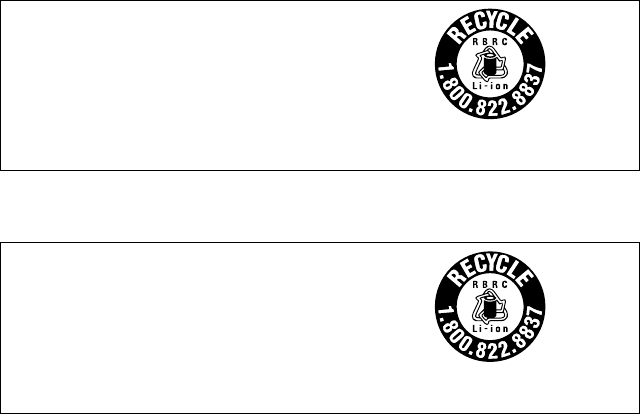
12
IC RSS-210 (Canada)
For the 5 GHz band only
To prevent radio interference to the licensed service, this device is intended to be operated indoors and away from
windows to provide maximum shielding. Equipment (or its transmit antenna) that is installed outdoors is subject
to licensing.
Pour la bande 5 GHz seulement
Pour empêcher que cet appareil cause du brouillage au service faisant l’objet d’une licence, il doit être utilisé à
l’intérieur et devrait être placé loin des fenêtres afin de fournir un écran de blindage maximal. Si le matériel (ou
son antenne d’émission) est installé à l’extérieur, il doit faire l’objet d’une licence.
This radio apparatus complies with RSS-210 of Industry Canada.
Operation is subject to the following two conditions: (1) this device may not cause harmful interference, and (2)
this device must accept any interference received, including interference that may cause undesired operation of the
device.
Cet appareil radio est conforme au CNR-210 d’Industrie Canada.
L’utilisation de ce dispositif est autorisée seulement aux deux conditions suivantes : (1) il ne doit pas produire de
brouillage, et (2) l’utilisateur du dispositif doit être prêt à accepter tout brouillage radioélectrique reçu, même si ce
brouillage est susceptible de compromettre le fonctionnement du dispositif.
IC RSS-310 (Canada)
This device complies with RSS-310 of Industry Canada. Operation is subject to the condition that this device does
not cause harmful interference.
Cet appareil est conforme au CNR-310 d’Industrie Canada. Son exploitation est autorisée sous réserve que
l’appareil ne cause pas de brouillage préjudiciable.
Recycling Information
RECYCLING LITHIUM-ION BATTERIES
RECYCLING LITHIUM-ION BATTERIES
Lithium-Ion batteries are recyclable.
You can help preserve our environment by returning your used
rechargeable batteries to the collection and recycling location nearest
you.
For more information regarding recycling of rechargeable batteries, call toll free 1-800-822-8837, or visit
http://www.rbrc.org/.
RECYCLAGE DES ACCUMULATEURS AUX IONS DE LITHIUM
RECYCLAGE DES ACCUMULATEURS AUX IONS DE LITHIUM
Les accumulateurs aux ions de lithium sont recyclables.
Vous pouvez contribuer à préserver l’environnement en rapportant les
piles usées dans un point de collection et recyclage le plus proche.
Pour plus d’informations sur le recyclage des accumulateurs, téléphonez le numéro gratuit 1-800-822-8837
(Etats-Units et Canada uniquement), ou visitez http://www.rbrc.org/.
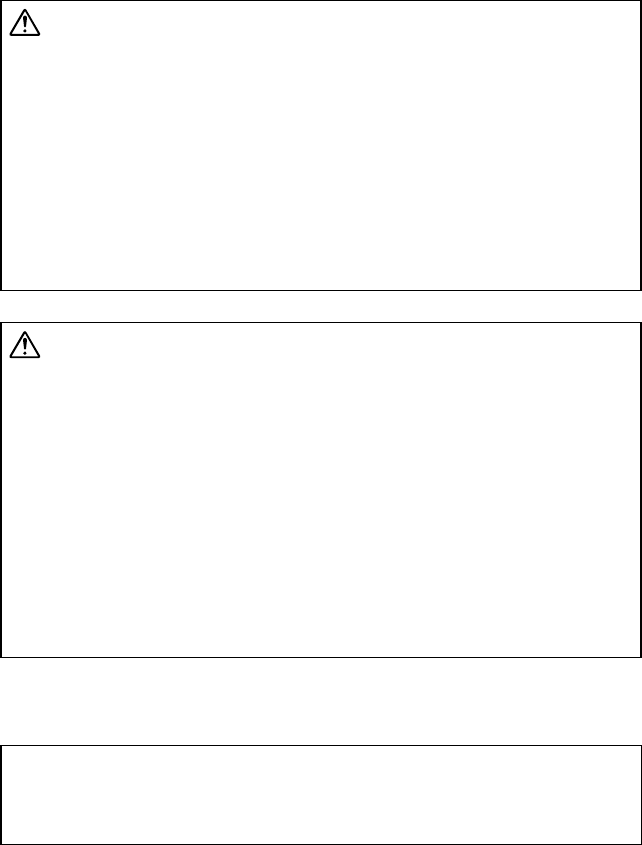
13
Caution
Danger of explosion if the battery is incorrectly replaced.
Replace only with the same or equivalent type recommended by the
manufacturer. Discard used batteries according to the manufacturer’s
instructions.
The battery pack used in this device may present a fire or chemical burn hazard
if mistreated. Do not crush, disassemble, heat above 140°F / 60°C or incinerate.
Dispose of used batteries promptly and properly. Keep away from children.
Do not short-circuit the metal terminals of the battery pack or wet them with
any liquid, for example, water, coffee, or juice.
Do not handle damaged or leaking lithium ion batteries.
Avertissement
Une batterie non conforme présente un danger d’explosion.
La remplacer seulement par une batterie identique ou de type équivalent
recommandé par le fabricant. Évacuer les batteries usées selon les directives
du fabricant.
La manutention incorrecte du module de batterie de cet appareil présente un
risque d’incendie ou de brûlures chimiques. Ne pas écraser, démonter, incinérer
ou exposer à une température de plus de 60°C. Éliminez les batteries usées
rapidement et de la manière appropriée. Garder hors de portée des enfants.
Ne court-circuitez pas les bornes métalliques de la batterie et ne les humidifiez
pas avec un liquide comme de l’eau, du café ou du jus.
Ne pas utiliser des batteries au lithium ionisé qui sont endommagées ou qui
fuient.
Specifications of the supplied battery pack
Model number VGP-BPL19 and VGP-BPX19 (supplied with selected models only)
Maximum charge current 2.2 A
Maximum charge voltage 8.38 V

14
For customers in USA
Regulatory Information
If you have questions about this product, you can write to the Sony Customer Information Service Center at
12451 Gateway Blvd., Fort Myers, FL 33913, USA or find Sony Customer Service on the Web site at:
http://esupport.sony.com/EN/VAIO/ for customers in USA or http://www.sony.ca/support/ for customers in Canada.
Declaration of Conformity
Trade Name: SONY
Model No.: PCG-11311L
Responsible Party: Sony Electronics Inc.
Address: 16530 Via Esprillo, San Diego, CA 92127, USA
Telephone:
(For FCC-related matters only.) 858-942-2230
This device complies with Part 15 of the FCC Rules. Operation is subject to the following two conditions:
(1) this device may not cause harmful interference, and
(2) this device must accept any interference received, including interference that may cause undesired
operation.
Telephone Consumer Protection Act of 1991
The Telephone Consumer Protection Act of 1991 makes it unlawful for any person to use a computer or other
electronic device, including FAX machines, to send any message unless such message clearly contains, in a margin
at the top or bottom of each transmitted page or on the first page of the transmission, the date and time it is sent
and an identification of the business, other entity, or individual sending the message, and the telephone number of
the sending machine or such business, other entity, or individual. (The telephone number provided may not be a
900 number or any other number for which charges exceed local or long distance transmission charges.)
In order to program this information into your facsimile machine, see your fax software documentation.
Personal Medical Devices
When Wireless WAN power is transmitting, it may affect the operation of cardiac pacemakers and other implanted
medical devices. If a minimum distance of 8 inches / 20 cm is kept between the PC and the pacemaker, the risk of
interference is reduced. If you have any reason to suspect that interference is taking place, immediately turn off the
WAN feature. Contact your cardiologist for more information.
For other medical devices, please consult the manufacture of the device.
Emergency Calls
The embedded mobile broadband module does not support voice calls.
15
For customers in Canada
Industry Canada Notice
This Class B digital apparatus complies with Canadian ICES-003.
Avis de L’Industrie Canada
Cet appareil numérique de la classe B est conforme à la norme NMB-003 du Canada.

Printed in China © 2011 Sony Corporation